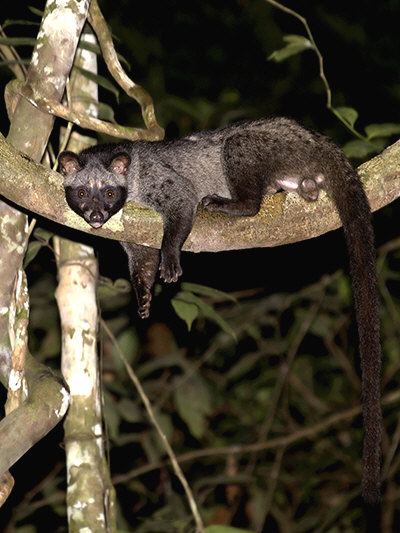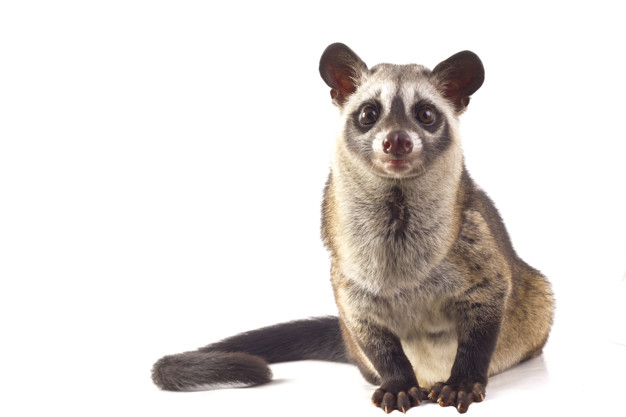The Asian Palm Civet is a small cat-like marine native to South Asia. They are also known through the ages for their sweet-smelling musk, which is still used today to produce expensive perfumes.
Facts:
These arboreal creatures mostly prefer densely forested areas and dense forests, but are also found in agricultural areas and are even easily fenced off by humans to find food.

Although it’s taxonomic status is still not assessed, 30 different species have been described between 1820 and 1992.
Palm civets frequent the same area for long periods of time using the same tree and resting site, and choose trees with holes and vines for camouflage. Not dangerous in origin, they can counter-attack or bite if provoked.
These creatures are omnivores. Their long dietary list includes both herbs and meat. Berries and pulpy fruits, insects and rodents, lizards, small snakes, etc.
Nothing can be studied about the mating rituals or sexual behavior of these cryptic creatures, except from zoo pets or captive specimens.
During mating, pairs will meet periodically for periods of one to fifteen days in the same resting trees. They find mates using scents from their anal gland secretions. After a gestation period of 2 months, the female gives birth to up to 2 litters of kittens per year, with 2–5 chicks per litters.
The animal has an affinity for the sap of the placements into a sweet liquor – ‘toddy’. That’s why he is also called ‘Toddy Cat’.
The palm civet has the ability to differentiate between animal species, sex, and familiar/unknown individuals by the smell of perennial gland secretions.
To the fault of many, the Asian palm civet is technically neither a cat nor a ‘monkey’ (though they are often colloquially referred to as a ‘cat’).
In some parts, these animals are killed for their meat, which is a type of processed oil used ingenuously to treat scabies.

There are total 8 different species of Civets found in India.
- Common Palm Civet
- Small Indian Civet
- Binturong
- Large Indian Civet
- Malabar Civet
- Small Toothed Palm Civet
- Masked Palm Civet (Himalayan Palm Civet)
- Brown Palm Civet
Palm Civets are omnivores, they eat insects and fruits such as berries.
These animals are nocturnal, mainly they come out at night.
Unusual coffee blend known as civet coffee, has caused threat to this animal.





